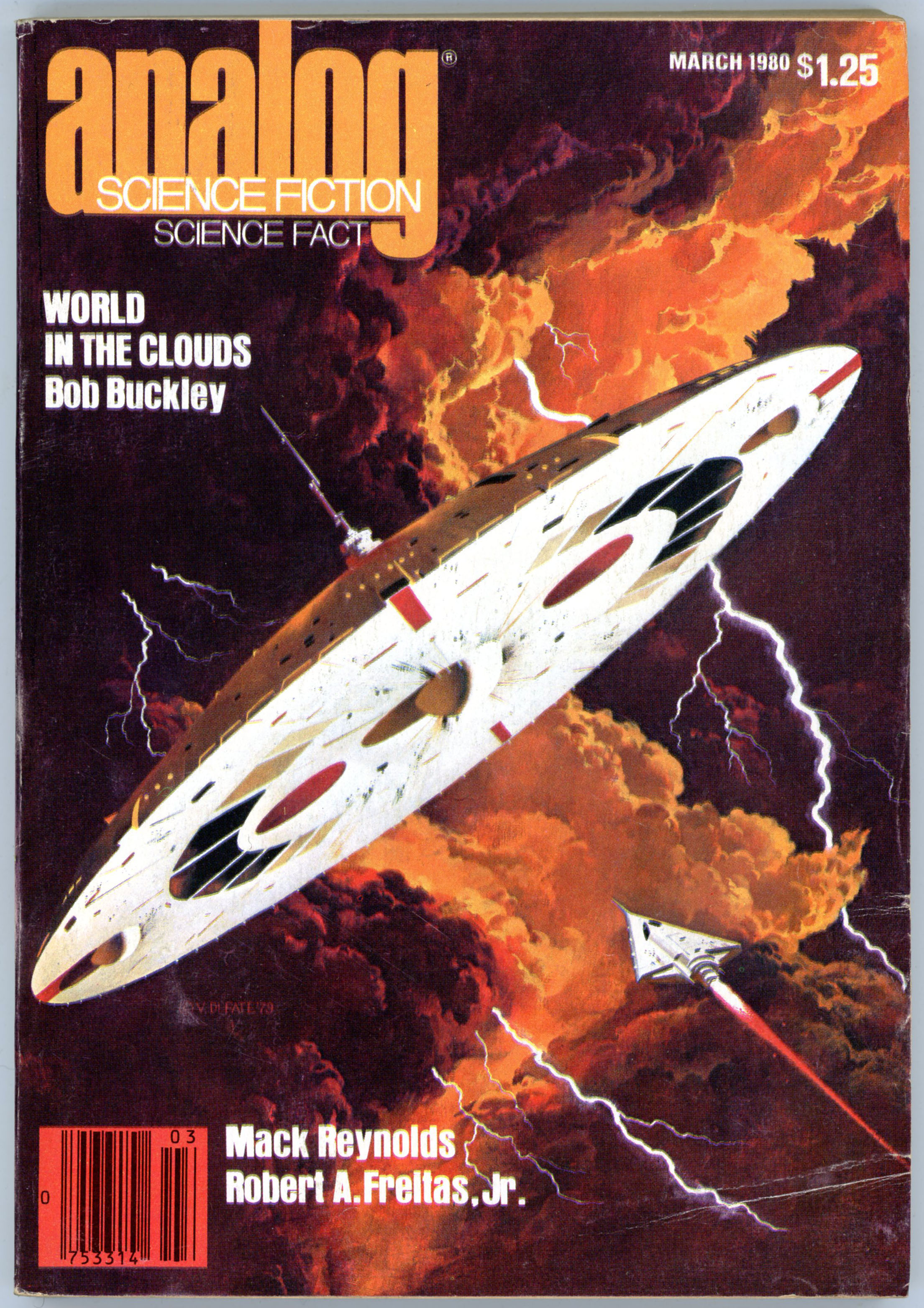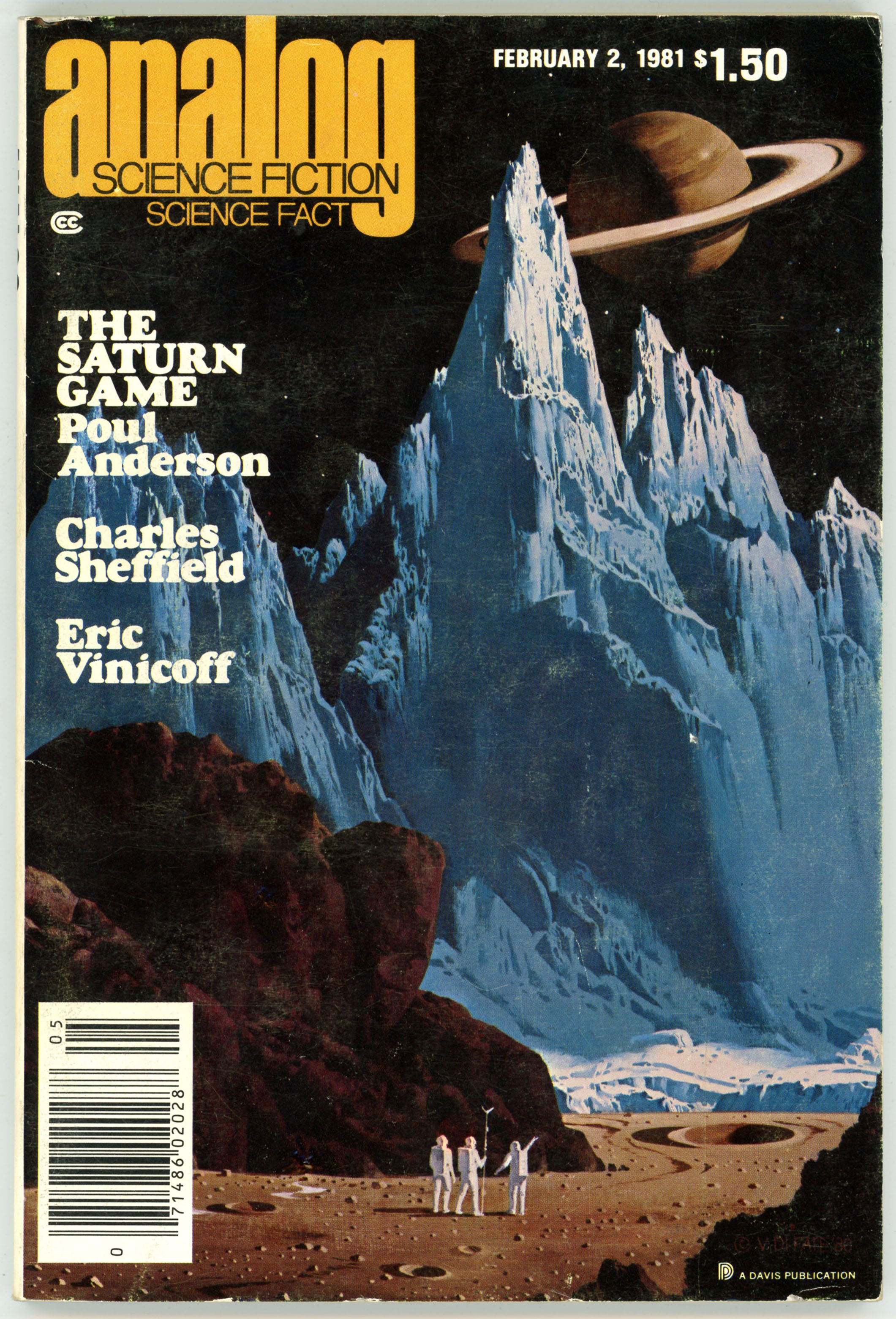Though not as well known as the novel 2001: A Space Odyssey, which in 1968 was released in parallel with Stanley Kubrick’s groundbreaking film of the same name, Arthur C. Clarke’s 1973 Rendezvous With Rama is still based upon a basic theme of the former: Humanity’s first encounter with an extraterrestrial civilization. However, Rendezous is vastly simpler in terms of plot and “story-line”, lying much more in the realm of straightforward exploration and purely descriptive “hard” science fiction than 2001. Nevertheless, the product of Clarke’s literary skill and imagination was (and is) an engrossing, fast-paced, fascinating story, albeit a tale without a definitive conclusion or transformation – whether physical or psychological – of its central characters.
Ballantine Books followed an interesting route for the design of the 1974 (September publication; the hardcover edition was published in 1973) paperback edition of Rama. Rather than using rectangular / vertical format cover art, so typical of and natural to the typical book, Rama’s cover (bearing the author’s name, book title, and reference to Clarke’s earlier works) features a circular “window” showing a glimpse of the interior of Rama (the alien spacecraft, not the book!).
Upon opening the cover, the not-so-cover art visible through the circular “window” is revealed to be part of a square-format foldout showing Rama’s interior.
Here’s the book’s cover…*
 ….and, here’s the book’s interior art, fully opened. Note the figures of the three astronauts in the left foregound. Based on the image’s perspective and the scale of features in the scene, the figures seem vastly too large, but, they do impart a sense of wonder.
….and, here’s the book’s interior art, fully opened. Note the figures of the three astronauts in the left foregound. Based on the image’s perspective and the scale of features in the scene, the figures seem vastly too large, but, they do impart a sense of wonder.
 Unfortunately, neither the book’s title page nor the art itself present the artist’s name. (Why – ? – ! – ?) However – – – based on the painting’s combination of technology and human figures, and visually literal (rather than abstract / stylistic, such as the works of John Schoenherr or Jack Gaughan) rendering of the scene, it seems – that the painting was created by Vincent Di Fate.
Unfortunately, neither the book’s title page nor the art itself present the artist’s name. (Why – ? – ! – ?) However – – – based on the painting’s combination of technology and human figures, and visually literal (rather than abstract / stylistic, such as the works of John Schoenherr or Jack Gaughan) rendering of the scene, it seems – that the painting was created by Vincent Di Fate.
If so (I think so…) as evidence, here are two DiFate covers from Analog Science Fiction – Science Fact, the first from March of 1980 and the second from February of 1981, that have the same general style as the cover of Rama.
Analog Science Fiction – Science Fact, March, 1980
“Worlds in the Clouds”, by Bob Buckley
 ________________________________________
________________________________________
Analog Science Fiction – Science Fact, February, 1981
“The Saturn Game”, by Poul Anderson
 I hope to rendezvous with the works of other science-fiction artists in future posts…
I hope to rendezvous with the works of other science-fiction artists in future posts…
Reference
Rendezvous with Rama (Ballantine Books catalog number 25288), at Internet Speculative Fiction Database
* I’m using “this” image, found via Duck-Duck-Go, instead of my personal copy of the book, because my copy has become rather – ? – ragged around the edges (and beyond!) – over the past 45 years!
